Introduction
This document describes the setup of a Point to multi-point topology for Industrial Wireless APs, it provides a configuration guide using the GUI.
Point to Multipoint
- Point-to-multipoint configurations allow additional network flexibility over Point-to-Point networks.
- A radio located at the aggregation point, usually closest to the core network, is set as the Primary radio.
- The Mesh End is the gateway between the CURWB wireless and wired core networks.
- The Mesh Point acts as a remote/secondary radio, pointing back to a Mesh End or another Mesh Point.
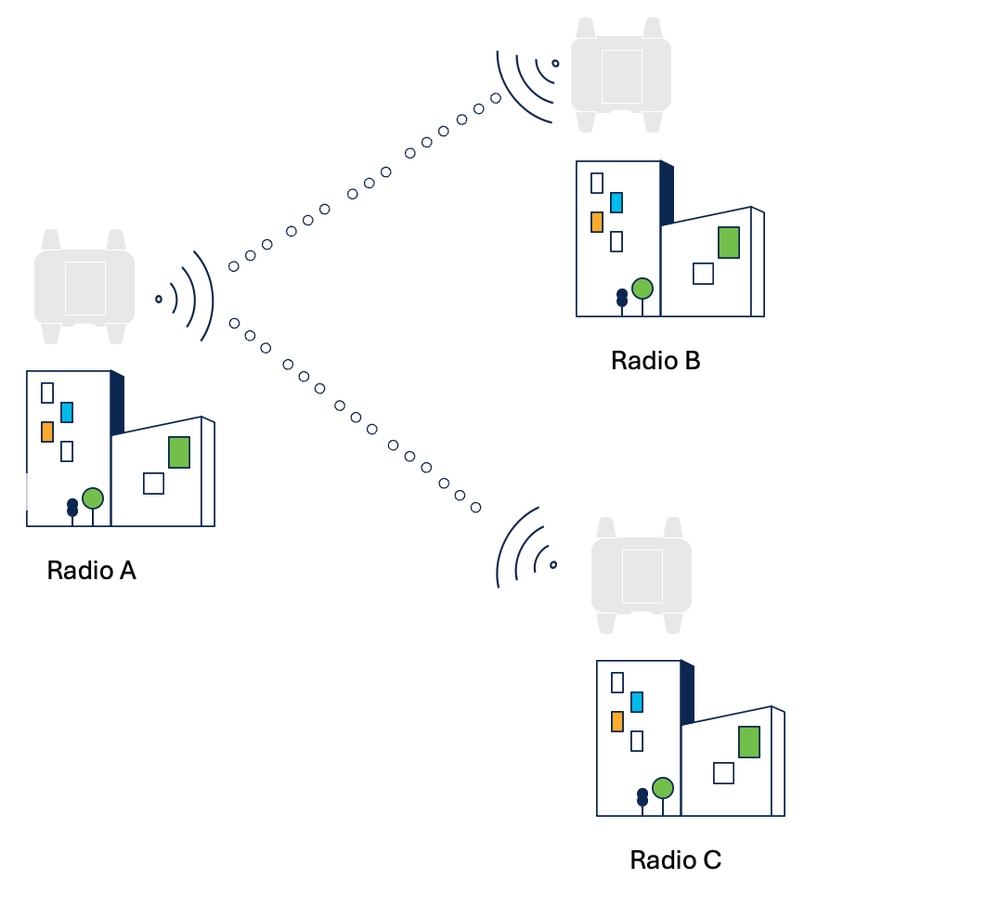
CUWRB Radio's role needs to be specified based on the function of the radio.
The role of the radio is selected automatically, based on several factors during the election process.
CURWB products can be used to create four different network topologies: Point-to-point, Point-to-multipoint, Mesh, and Mixed Networks, a combination of mesh and point-to-multipoint.
Using FluidMAX technology, all the different network architectures are supported without any hardware change or manual software configuration.
The devices automatically detect the architecture in use and configure and adapt the communication protocols to best support the deployed topology.
The FluidMAX operating mode of this unit can be forced during the configuration as well.
If the operating mode is Primary/Secondary, a FluidMAX Cluster ID can be set. If the FluidMAX Autoscan is enabled, the Secondary units scan the frequencies to associate with the Primary with the same Cluster ID.
In this case, the frequency selection on the Secondary radios are disabled.
- FLUIDMAX CLUSTER ID: All radios of a single Point to multipoint network form a cluster. Primary and secondary radios of the same PTMP need to share the same cluster-ID.
- FLUIDMAX AUTOSCAN: it allows automatic reconfiguration of the PTMP. Configuring the wireless channel on the PRIMARY automatically changes the channel on the secondaries.
- Fluidmax Primary
The radio operates as a receiver in a cluster with other radios sharing the same cluster-ID. It also dictates the operating frequency.
The radio operates as a transmitter in a cluster, sending data to a primary radio with the same cluster-ID. If Autoscan is enabled, the Secondary radio scans and moves to the frequency used by the optimal Primary radio.
Point to Multipoint Network Configuration
To create a point-to-point Mesh link, we must configure these parameters:
- Radio Mode (Mesh end must be carefully selected. The radio that is physically closest to the core network is usually configured as the Mesh End.)
- IP address
- Passphrase, Frequency, Fluidmax
- Correct licenses - This is essential that any additional features like VLAN, and AES if enabled on one radio, be activated on all radios.
General mode: Radio mode and IP addresses can be configured from this page
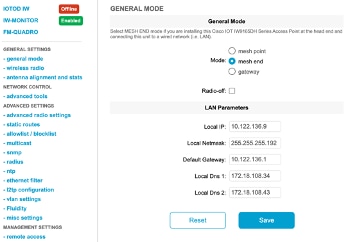
Wireless Radio: Passphrase, frequency, and fluidmax mode can be configured from wireless radio.
Radio that is aggregating the links/ acting as a receiver would be configured as Fluidmesh Primary and transmitters that are connected to the end devices would need to be configured as Fluidmax Secondary.
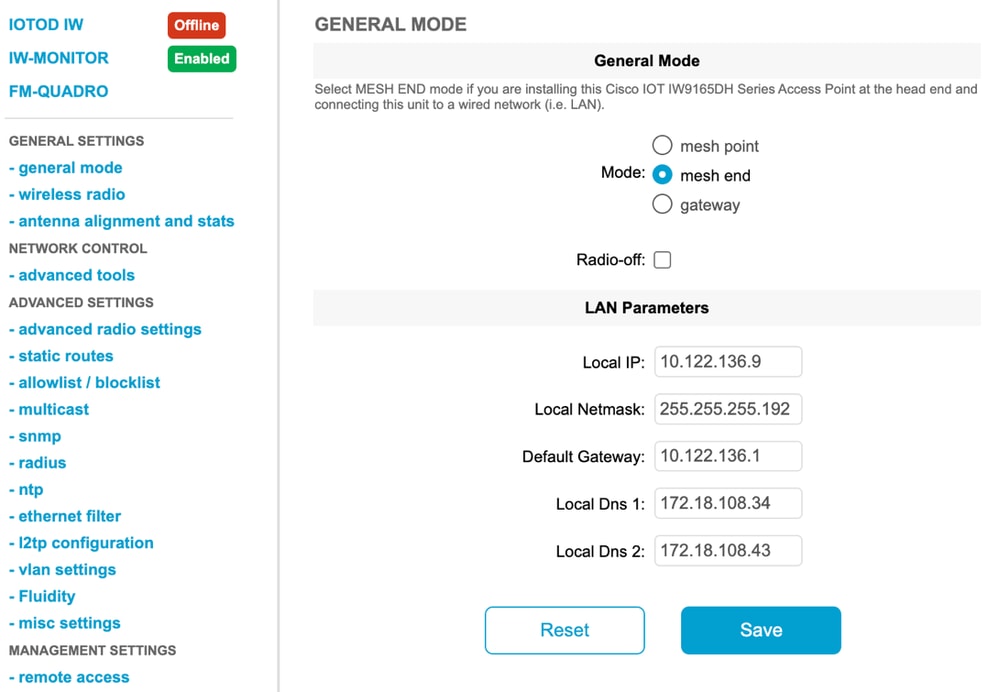
Advanced Radio Settings:
Cluster-ID for a PTMP or Autoscan can be configured from this page. The antenna number can be selected as per the antenna used in the deployment.
Additionally, AES can be enabled to encrypt the data plane.
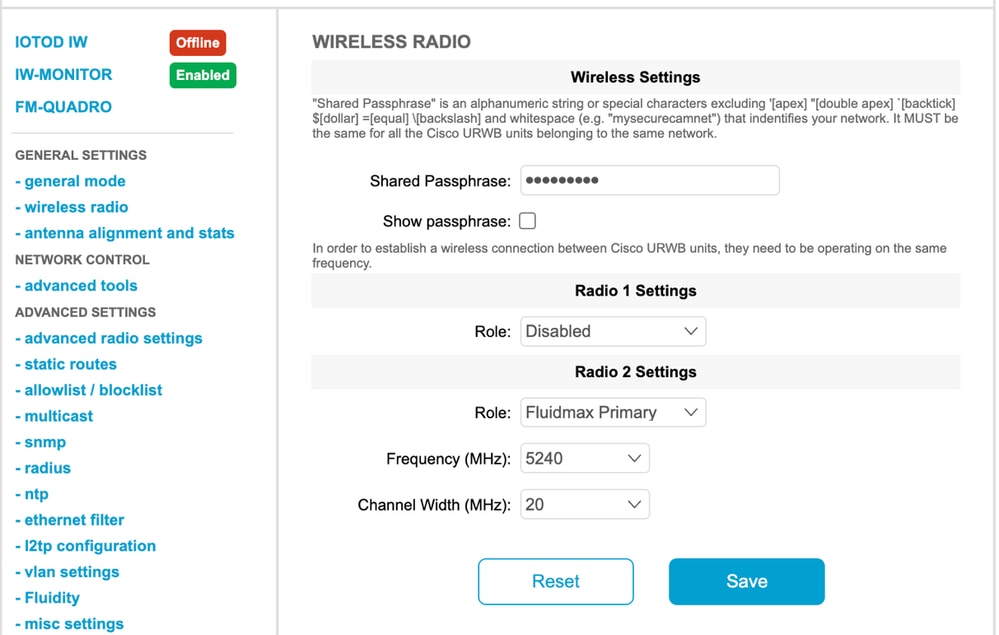
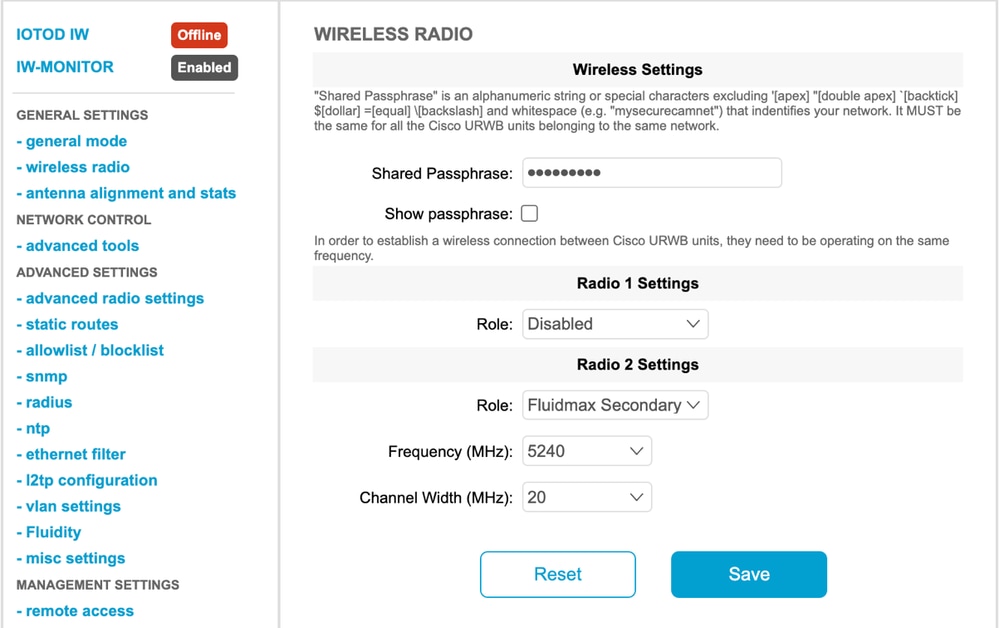
Troubleshooting
Point to multi-point network Common issues
- In the P2MP network, the Radio that is aggregating the links needs to be using an antenna with correct horizontal and vertical coverage, so all secondary radios are within the coverage area of the primary radio and the secondary radios need to be pointing directly to the primary radio. RSSI for the uplink and downlink for all links needs to be within -45 to -65 dBm.

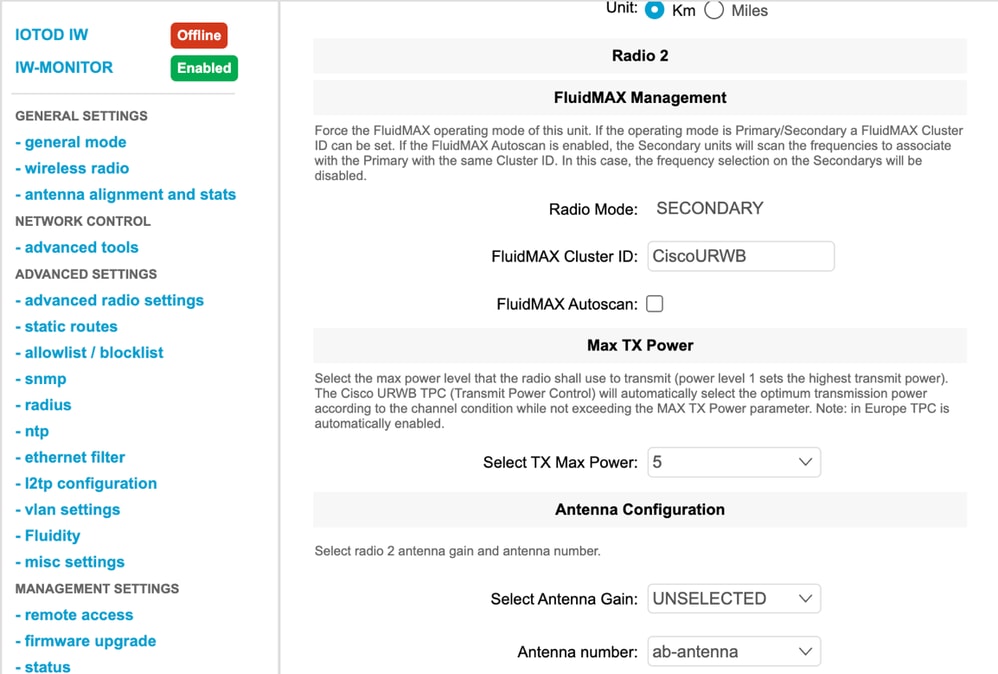
- If a deployment has multiple clusters of radios on site, each cluster needs to be on non-overlapping frequency, so it does not interfere with each other.
- For a PMP cluster, there must be a direct line of sight between the primary radio and the secondary radio. If there is no direct connection between primary and secondary radio, additional relay points need to be added.
System Design (Terminology)
Passphrase: This parameter is configured on radios that belong to a particular network cluster or broadcast domain, allowing radios to communicate with each other and form connections.
The passphrase is used to encrypt the signaling information transmitted between radios, and form connections before data transmission. The default is ‘CiscoURWB’.
Mesh ID: A Mesh ID is a four-octet identifier used on, and unique to, every CURWB device. It is usually in a format of 5.a.b.c.
Mesh End: A CURWB radio or device that acts as the gateway between the core network and the CURWB network. Usually, a Mesh End device is explicitly designated by a system administrator.
However, a radio can also be automatically elected as a Mesh End by other radios on the network if that radio has the lowest Mesh ID number, and no other Mesh End is configured as part of the cluster.
Mesh Point: A CURWB radio that acts as a remote unit on the CURWB network and is used to transmit data to end devices within the network.
AutoTap: A network-loop prevention mechanism that allows CURWB devices to detect connections and allow only a dedicated ingress/egress route to and from the Mesh End or network core.








 Feedback
Feedback